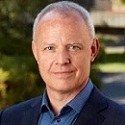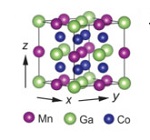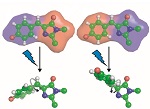
From the Director

SSRL is very proud to have joined other light sources around the world in running the facility and a few specific beam lines to enable COVID-19 related research. Despite the general shutdown as a result of a shelter-in-place rule, we are as of present operating SPEAR3 and three (soon to be four) stations – BLs 12-2 and 9-2 for macromolecular crystallography, 4-2 for biological small-angle x-ray scattering, and 6-2 for TXM studies, all in support of avenues to address the pandemic in various ways. Unfortunately but understandably, we cannot provide any definitive prediction as for when SSRL will resume normal user operations. While SLAC has initiated a planning process for gradual site opening, including a phased startup of SSRL operations, at this point we have no definite date, and are looking ahead a couple of weeks at a time. We urge you to check our website weekly for updated announcements, and ask for your patience and understanding.
Science Highlights

Discovery of Topological Weyl Fermion Lines and Drumhead Surface States in a Room Temperature Magnet – Contacts: Ilya Belopolski and M. Zahid Hasan, Princeton University
Physicists have been interested in crystalline materials where the quantum mechanical behavior of electrons is governed by topology, so-called topological quantum matter. Recently the community has been particularly excited about crystals which additionally exhibit magnetism, i.e. topological quantum magnets. What new topological behavior might such magnets exhibit? Can we find examples of such exotic quantum magnets in nature? And could magnetic topological phases of matter lead to insights about fundamental questions in science or pave the way to technological applications? Read more...

Shedding Light on Photoisomerization: Electrostatic Control of Excited State Reaction Pathways within Proteins – Contact: Stephen G. Boxer, Stanford University
Organisms including microbes, plants, and animals can interpret light as a signal for action. While this is a fundamental and important process, the mechanism still holds mystery. How are photons converted into molecular signals? At the most basic step, a light-sensing molecule, a chromophore, undergoes a conformational change, an isomerization, when it encounters a photon. Many details are still unknown, which impacts efforts to engineer artificial light-sensing systems based on natural systems. A team of scientists has illuminated the importance of the immediate electrostatic environment of the chromophore on photoisomerization. Read more...
More SSRL Science
Rust Offers a Cheap Way to Filter Arsenic-poisoned Water
Excerpt from SLAC News Article by Ali Sundermier
When water flows deep underground, it often dissolves inorganic substances from mineral deposits in the earth’s crust. In many regions, these deposits contain arsenic, a naturally occurring element that is colorless, tasteless and odorless. Although its presence is barely noticeable, prolonged exposure to arsenic-contaminated water can lead to gangrene, disease and many types of cancer, resulting in major loss of income for millions of people and even death.
Inspired by natural processes in soil that bind contaminants and filter them out, Case van Genuchten of the Geological Survey of Denmark and Greenland has been using iron oxides such as rust, which are abundant in soil, to filter out arsenic from groundwater.
The research team conducts x-ray absorption spectroscopy experiments at SSRL on Beam Line 4-1 to better understand how arsenic binds to different rust particles and have recently published results in Water Research. Read more...
Beam Line Development
First Light at BL17-2
A new undulator beam line constructed for the materials scattering community achieved first light in the BL17-2 hutch at the end of February. This significant milestone marks the end of construction. Commissioning of the new beam line, including beam line optics, began in early March but was suspended due to the COVID-19 driven shutdown. We are optimistic that we will be able to resume commissioning in due time, but it is unclear when commissioning experiments will begin. BL17-2 will add new capabilities in the form of a micro-focused beam, with high flux. The end station will be capable of performing simultaneous SAXS/WAXS measurements, as well as experiments that require a 6-circle diffractometer, The BL7-2 diffractometer will be moved from BL7-2 to BL17-2, and BL7-2 will therefore at that time no longer be available for x-ray scattering user experiments.
Meeting Summary
Workshop on Resonant Inelastic X-ray Scattering with Soft X-rays, February 3-4, 2020
The spectroscopy group at SSRL organized a workshop on soft x-ray resonant inelastic x-ray scattering (RIXS) February 3-4, 2020. This workshop introduced the fundamental aspects of 2p3d RIXS with applications in solid state physics, catalysis and (bio-) inorganic chemistry for the analysis of the electronic structure, including the crystal field parameters, covalent ligand mixing and spin-orbit coupling. Combining RIXS and magnetic circular dichroism in RIXS-MCD experiments, both in the soft and hard x-ray range, opens the field of XMCD to the more detailed 2-dimensional RIXS data maps. The options of angular dependent RIXS measurements open many new possibilities to study details of the electronic and magnetic structure of transition metal systems were discussed. Hands-on tutorials were based on both the CTM suite of programs and also the Quanty/Crispy programs. Both programs were explained and examples were given.
Funding for the soft x-ray RIXS workshop was provided by NIH, DOE-BER and DOE-BES.
SSRL in the Loop
BBC Business News interviewed Nick Pingitore about the hunt for crucial rare earths, and yttrofluorite, the mineral he talks about in the video, is what he and his team from the University of Texas at El Paso studied during their SSRL beam time.
The latest SLAC on Tap at the Old Pro in Palo Alto was a big hit, where Johanna Nelson Weker revealed what happens when a battery walks into a bar. She also talked about SSRL, beer, and using x-rays to understand brewer’s yeast and battery failure.
Events
- Stanford-SLAC Cryo-EM Center Beginning Practical Workshop - postponed
- RapiData 2020 - postponed until January 2021
- Non-Linear Multidimensional Methodologies for Studying Basic Energy Science at SLAC, May 6–7, 2020 - postponed
- Cryo-EM Image Processing Workshop, June 10–12, 2020, S2C2 Workshops
- Ultrafast X-ray Summer School 2020 (UXSS 2020), June 15–18, 2020 - postponed
- SSRL X-ray Scattering School, Save the dates: August 3–7, 2020
- SSRL EXAFS Summer School, Save the dates: August 24–27, 2020
- 78th Annual Pittsburgh Diffraction Society Conference, Menlo Park, CA, Sep 27–29, 2020 website
- SSRL/LCLS Users' Meeting and Workshops, Sep 28–Oct 2, 2020 website
User Research Administration
Proposal Deadlines
- Apr 1, 2020 – Macromolecular Crystallography (extended through July 1, 2020)
- May 1, 2020 – X-ray / VUV
- June 1, 2020 – S2C2 Cryo-EM Service/Training Proposals
Submit beam time requests and proposals through the User Portal. Questions can be directed to the SSRL User Office or the CryoEM User Office
The Stanford Synchrotron Radiation Lightsource (SSRL) is a third-generation light source producing extremely bright x-rays for basic and applied research. SSRL attracts and supports scientists from around the world who use its state-of-the-art capabilities to make discoveries that benefit society. SSRL, a U.S. DOE Office of Science national user facility, is a Directorate of SLAC National Accelerator Laboratory, operated by Stanford University for the U.S. Department of Energy Office of Science. The SSRL Structural Molecular Biology Program is supported by the DOE Office of Biological and Environmental Research, and by the National Institutes of Health, National Institute of General Medical Sciences. For more information about SSRL science, operations and schedules, visit http://www-ssrl.slac.stanford.edu.
To unsubscribe from SSRL Headlines, just send an e-mail to listserv@slac.stanford.edu with "signoff ssrl-headlines" in the body.
To subscribe, send an e-mail to with "subscribe ssrl-headlines" in the body.
Questions? Comments? Contact Lisa Dunn




